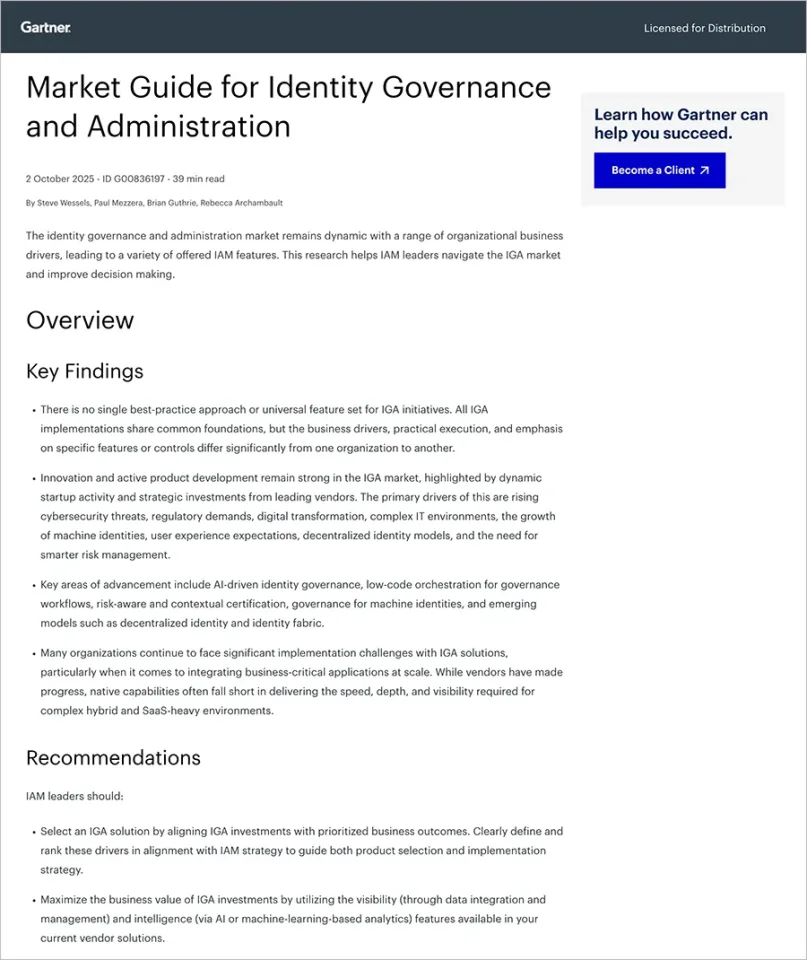When it comes to granting access, following the principle of least privilege (Zero Trust) is almost a given. It’s a simple rule that ensures users only have access to the specific resources they need to perform their jobs, limiting exposure to sensitive systems and data. However, while this approach minimizes unnecessary access, it doesn’t fully address the risks associated with sensitive, elevated access. This is where traditional Identity Governance and Administration (IGA) tools fall short.
Pathlock’s Elevated Access Management (EAM) goes beyond the limitations of traditional IGA to provide a secure, time-bound, and audit-compliant solution for managing elevated access. In this blog, we’ll explore the challenges of traditional IGA and how Pathlock EAM addresses these gaps and facilitates a Zero Risk approach to access.
Elevated Access and The Limitations of Traditional IGA
At its core, traditional IGA is designed to streamline the provisioning and governance of user access across an organization’s systems. It enables organizations to define roles, grant permissions, and enforce least privilege access. But, there are inherent limitations when it comes to managing elevated or sensitive access, particularly in environments that handle high-stakes functions such as financial reporting, IT operations, and HR data management. Key limitations of traditional IGA in managing elevated access include:
- Standing Privileges to Sensitive Functions: Traditional IGA often grants standing access to sensitive systems, meaning users with elevated roles can access sensitive data or perform critical functions at any time. This constant access increases the risk of unauthorized changes or misuse.
- Inability to Restrict Access by Time: While traditional IGA follows the least privilege model, it lacks the capability to restrict access to sensitive functions for specific periods. Users may have access to critical systems around the clock, creating prolonged windows of exposure to risk.
- Lack of Real-Time Risk Management: Traditional IGA tools do not seamlessly integrate real-time risk analysis to identify potential issues with elevated access. This can lead to unmonitored, inappropriate access, increasing an organization’s vulnerability to internal threats or errors.
- Limited Audit Controls: While IGA tools may offer basic logging capabilities, they lack the robust audit and reporting mechanisms required for effectively tracking and reviewing the use of elevated access in sensitive systems.
Pathlock Elevated Access Management: A Solution for Time-Bound, Audit-Compliant Access
Pathlock Elevated Access Management (EAM) offers a comprehensive solution that addresses these limitations. It goes beyond traditional IGA by introducing fine-grained, time-bound, and auditable access controls, allowing organizations to manage elevated access in a secure, compliant, and efficient manner. Here’s how Pathlock EAM redefines elevated access management:
- Temporary, Time-Bound Access to Sensitive Systems: Instead of granting standing access to sensitive functionality, Pathlock EAM enforces time-bound access. Users with elevated privileges must request access when they need to perform specific tasks, and once the task is complete, their access is automatically revoked. This significantly reduces the time during which sensitive data or systems are exposed.
- Seamless Integration with Access Risk Analysis: Pathlock’s Elevated Access Management seamlessly integrates with the Pathlock Access Risk Analysis module. This integration allows organizations to identify users with standing access to sensitive functions and quickly manage those access points by transitioning to a time-bound model. Risks associated with elevated access are identified and managed in real-time, ensuring that the organization is constantly aware of who has access to sensitive functions and for how long.
- Comprehensive Audit Trail and Compliance Support: One of the standout features of Pathlock EAM is its robust audit functionality. Every action performed with elevated access is logged, and change logs are generated and sent to the appropriate reviewer for approval. This detailed and easy-to-understand change logging audit trail not only helps organizations meet IT General Controls (ITGC) but also ensures they remain compliant with regulatory requirements around sensitive access management.
- Controlled Provisioning with Conflict Resolution: Elevated access requests must go through an approval process before users can gain access. The system ensures that only authorized personnel can approve elevated access, and flagging of potential conflicts enables organizations to manage and resolve any risks associated with access requests before they are granted.
The Benefits of Pathlock EAM
By going beyond traditional IGA capabilities, Pathlock EAM delivers several important benefits for organizations managing elevated access:
- Reduced Risk Exposure: With time-bound access, users only have elevated privileges for the duration required to complete a task, significantly reducing the risk of misuse or unauthorized changes.
- Enhanced Audit and Compliance: Pathlock EAM provides detailed audit trails and real-time change logs, ensuring that organizations can easily track and review all actions performed with elevated access. This is essential for meeting regulatory and audit requirements.
- Proactive Risk Management: The integration with Pathlock’s Access Risk Analysis means organizations can actively identify and manage risks associated with elevated access in real-time, rather than reacting to incidents after the fact.
Conclusion
While traditional IGA has made strides in simplifying user access governance, it falls short in addressing the unique challenges posed by elevated access to sensitive systems. Pathlock Elevated Access Management fills this gap by providing time-bound, audit-compliant access, reducing risk exposure, and offering advanced tools for managing and mitigating access risks. Pathlock ensures that organizations can follow Zero Risk principles while maintaining the flexibility and control needed to manage sensitive functions.
Contact us today to schedule a customized demo.



